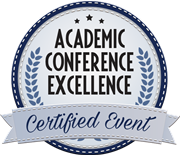
Merritt T Cooke
China Partnership of Greater Philadelphia, USA
Title: Bringing energy-efficient building solutions to the North American and Asian markets at scale and speed
Biography
Biography: Merritt T Cooke
Abstract
The United States and China represent the two largest economies in the world. They are also the two largest contributors to global greenhouse gas (GHG) emissions and, in both countries, the built environment accounts for close to 40% of their emissions (in comparison to less than 30% for transportation systems). Therefore, any global effort to tackle climate change requires that energy-efficient building solutions be implemented at scale and speed in these two markets. The challenge is that, despite different commercial dynamics in the U.S. and China, both markets are characterized by jumbled incentive structures and horizontally-fragmented chains of decision-making which combine to impede the adoption of energy-efficient building solutions. The challenge of implementing energy-efficient building solutions at scale and speed in the United States and China is not primarily a challenge of technological innovation but rather a policy and behavioral challenge of aligning incentives among multiple stakeholders. For this reason, a framework combining political science at the macro level with behavioral economics in the real estate sector is utilized. The study borrows heavily from the practical experience of several programs – such as the U.S.-China EcoPartnership Program at the bi-national level and the AMPLIFY/EEB Lab Program at the global level – which have pioneered methodologies to bridge the gaps between industry players in both markets as well as between market conditions in both countries. The adoption of energy-efficient building solutions can be expanded in scale and accelerated in speed by focusing on the key role of cities in adopting these solutions and by leveraging existing relationship networks among various cities in each country as well as existing “Sister City” relationships between cities in the two countries. As cities take center-stage as the primary sub-national actors able to realize the intended nationally determined commitments set forth at COP21 in Paris in 2015, the larger U.S. and Chinese cities have a role of outsized importance to play. There is every reason to take advantage of the best programs of implementation practice and the most well-established networks of cross-border city-to-city sharing to expand and accelerate the adoption of energy-efficient building solutions on a bi-national basis.

